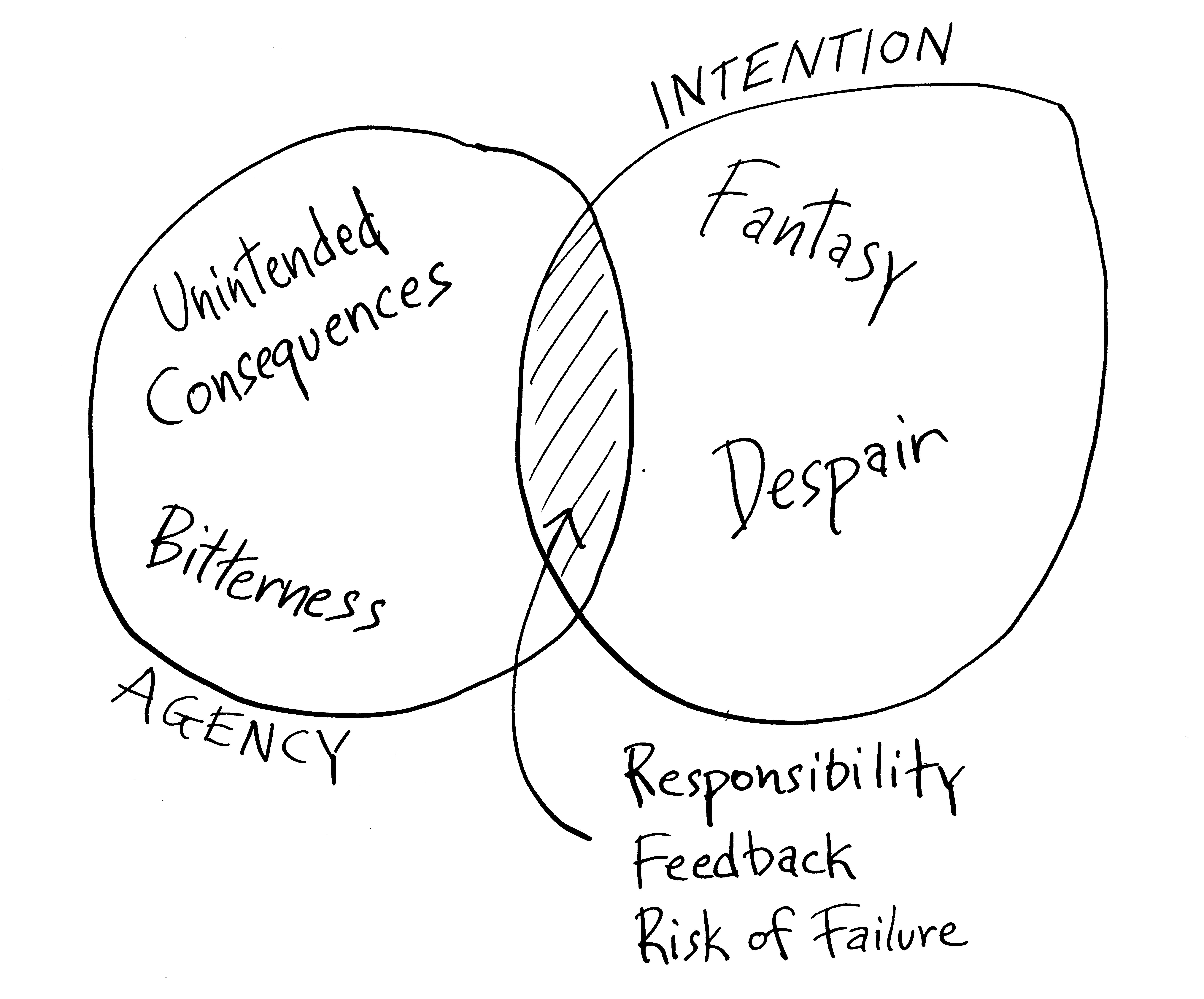Life, powered by a tiny fraction of incoming sunlight, is the most powerful and creative planetary force. Our planet's atmosphere, its soils, its blue, white, and green colors viewed from space, even the composition of its crust and oceans, are the products of eons of life's complex chemical wizardry. This work of life powers carbon cycling, nitrogen cycling, and modifies and slows the vastly greater power of water cycling at all scales. We are riding an enormous, eddying flow of sunlight energy captured by interrelated communities of self-motivated living organisms whose metabolisms, behaviors, and relationships are increasingly influenced by our own.
Though this incredibly complex circle of life does vastly more work than all our human-controlled power, and more work even than geologic forces, the scale and reach of this work is mostly hidden from us. Photosynthesis happens quietly and gradually in the growth of a leaf or diatom. It's spread out and diversified, at ordinary temperatures and pressures, unlike diesel engines or volcanic eruptions. Key processes occur with microbes and parts of cells that are too small to see.
Our problem-oriented and specialized science, our vested interests, and much of our advocacy and solutioneering are ill-equipped to recognize, let alone learn to work with, these larger forces and wholes. Yet learning to work with this enormous complexity is what we need to do.
This complexity invites a different power structure. The feedback loop--learning what works to enhance the function of the whole system, and what doesn't--takes precedence over mechanistic or microscopic study of the parts (these are important, but will often get filled in as needed). And collaborative, participatory, and inclusive framing and interpretation, with a local focus, is more empowering than specialized study by experts.
| to manage parts: | to manage wholes: | |
| top-down | a few accredited experts and specialists have the power to ask, frame, interpret, forecast, regulate, and collect data | ask, how does the whole system function? |
| bottom-up | ask, what are the mechanisms of the parts? | engage more people in asking and answering whole-system questions, based on observations, real data, variability over space and time, and creativity: participatory, collaborative, inclusive, and local |
| strategy | ask, how to fix the problem? | ask, what conditions would enable the result we need and want? |
With the parts approach there is the hope that if we manage the parts right, the whole will come right -- yet this seldom happens in genuinely complex situations. Without a focus on managing whole systems, there may be little overlap between agency (the power to create change) and the intention to enhance whole systems.
It's possible to manage wholes, but it needs a different power structure, a different relation between bottom up and top down. It means asking questions that relate to whole systems such as carbon and water cycling, people-land-money, and the way power is shared. It's very difficult to manage wholes, to enhance whole systems, using the power structure on the left, above.
Agency (the ability to make change) without intention (to enhance whole systems) brings unintended consequences and bitterness. Having the intention, but no agency, is a fantasy that ends in despair.

Wedge issues such as climate as a CO2-only issue tend to keep agency and intention separate, and maintain focus on managing parts, problems, or symptoms.
Where agency and intention overlap is where there is opportunity for feedback and taking responsibility for the state of the whole system, for water and carbon cycling, soil health and watershed function. By working on this with consensus-building and collaborative monitoring, the area of overlap can be expanded.
more info on Atlas: